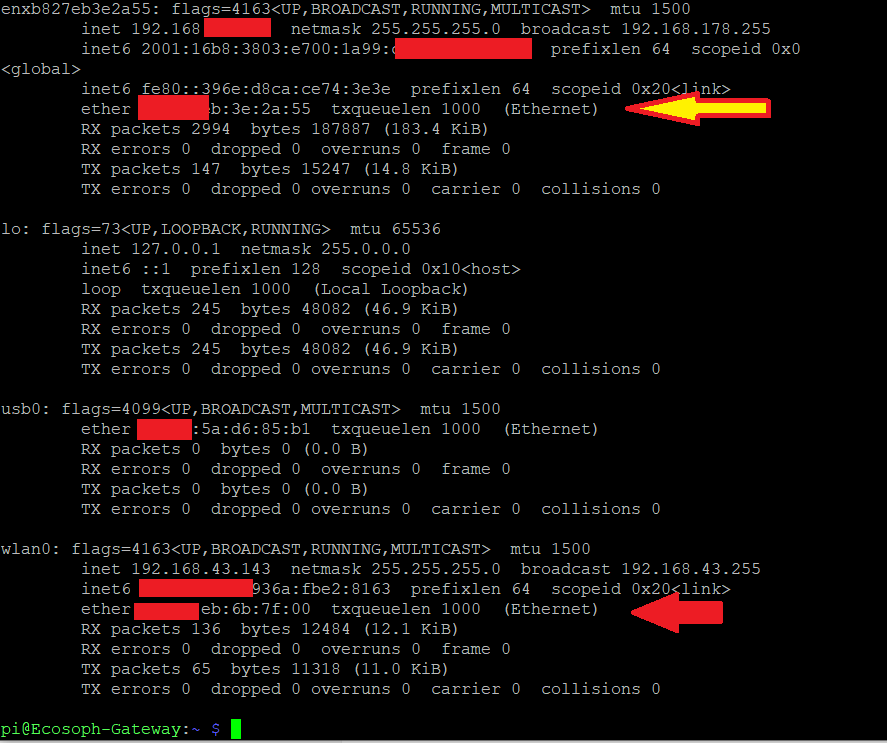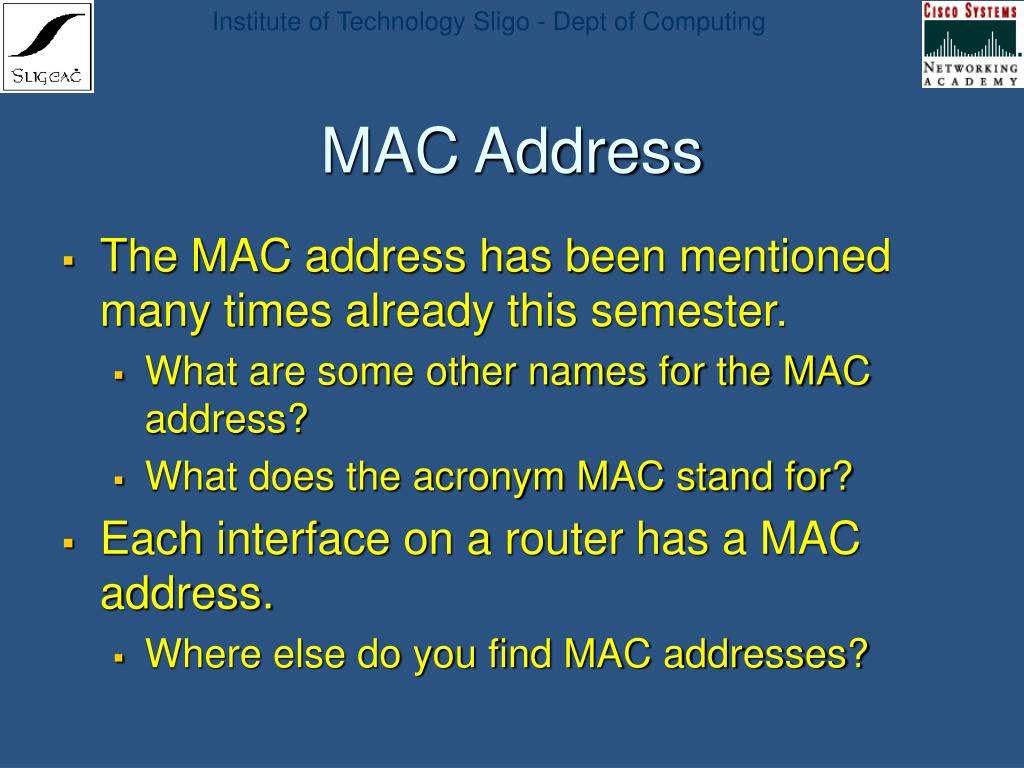

- RYU GET PORTS FOR MAC ADDRESS HOW TO
- RYU GET PORTS FOR MAC ADDRESS CODE
- RYU GET PORTS FOR MAC ADDRESS PC
A switch connecting and a packet arriving to the controller are only two of the many events that are available for listening. Essentially, there are three functional parts in nearly every controller application.Īlthough these three parts are pretty much universal, the last two are really part of a more general structure where the controller applications chooses what events to listen to. While browsing some of the example controller applications, you should run into a common pattern of how Ryu Controller Applications are segmented on a high level. The controller app itself just listens for packet-in messages, keeps track of a simple dictionary-based MAC table, and adds OpenFlow flows as needed to the switch. Ryu takes care of all the common details of handling connections from switches, interpreting and converting packets into easy to use objects and so on.
RYU GET PORTS FOR MAC ADDRESS CODE
I mention glue code here because that is essentially what most of this code is. Follow along as we discuss the detailed inner workings of Simple Switch as an existing example using the Ryu API with detailed documentation and code references in this continuation of our OpenFlow Core Tutorial Track. Now that our virtual workspace has all the development tools we need, it is now time to look into the real meat of Ryu: its API. Powered by Atlassian Confluence 6.In our previous articles, we covered pretty much everything needed to get started with SDN development using Ryu and Mininet. Reader should be able to start testing and writing test applications using the SDN platform presented in this document. User can dump the flow table to verify its behavior. The two flows will be created when the next round of the ICMP requests come into the controller. The MAC learning process repeats itself again.


To test it again, simply use del-flows command to delete the flow. Figure 13 - Flow tables set up by simple switch application As a result, the dump-flows show 2 flows created by the simple switch application. The same process repeats again for setting up flows from port 3 and port 4.
RYU GET PORTS FOR MAC ADDRESS PC
This message is the result of a ping test running on the PC connected to port 3 to PC on port 4. The second message is an ICMP request that comes in from port 3 and has a target destination of port 4. Figure 12 - Switch responses with simple switch application. The first one is a probe message sent by the controller on local port. This is the default switch behavior that we have tested before. This simple switch application sets up the flow table to forward traffic from source port to the correct destination port.
RYU GET PORTS FOR MAC ADDRESS HOW TO
The following instructions will show how to run the simple switch application. RYU code distribution comes with a set of applications to show how applications can be integrated. With just the controller connected without any application, the ping between the PCs cannot work because the ARP requests are forwarded to the controller without any packet processing instructions in the flow tables.


 0 kommentar(er)
0 kommentar(er)
